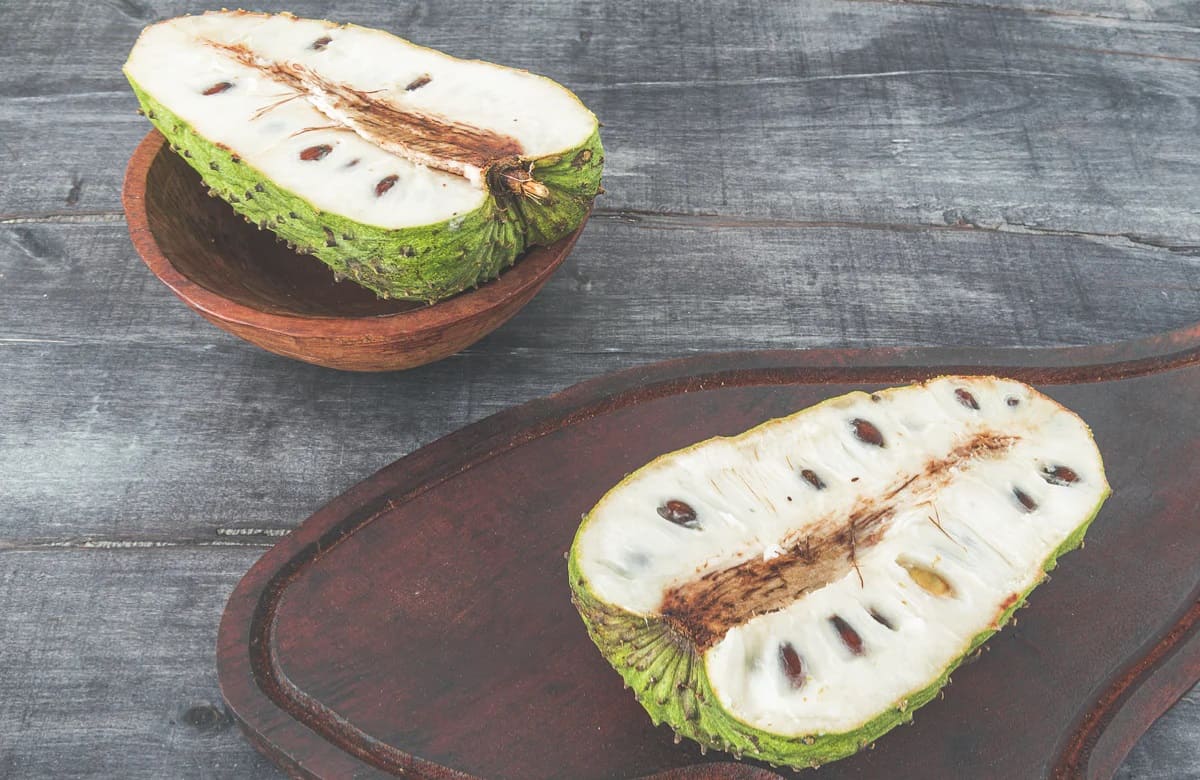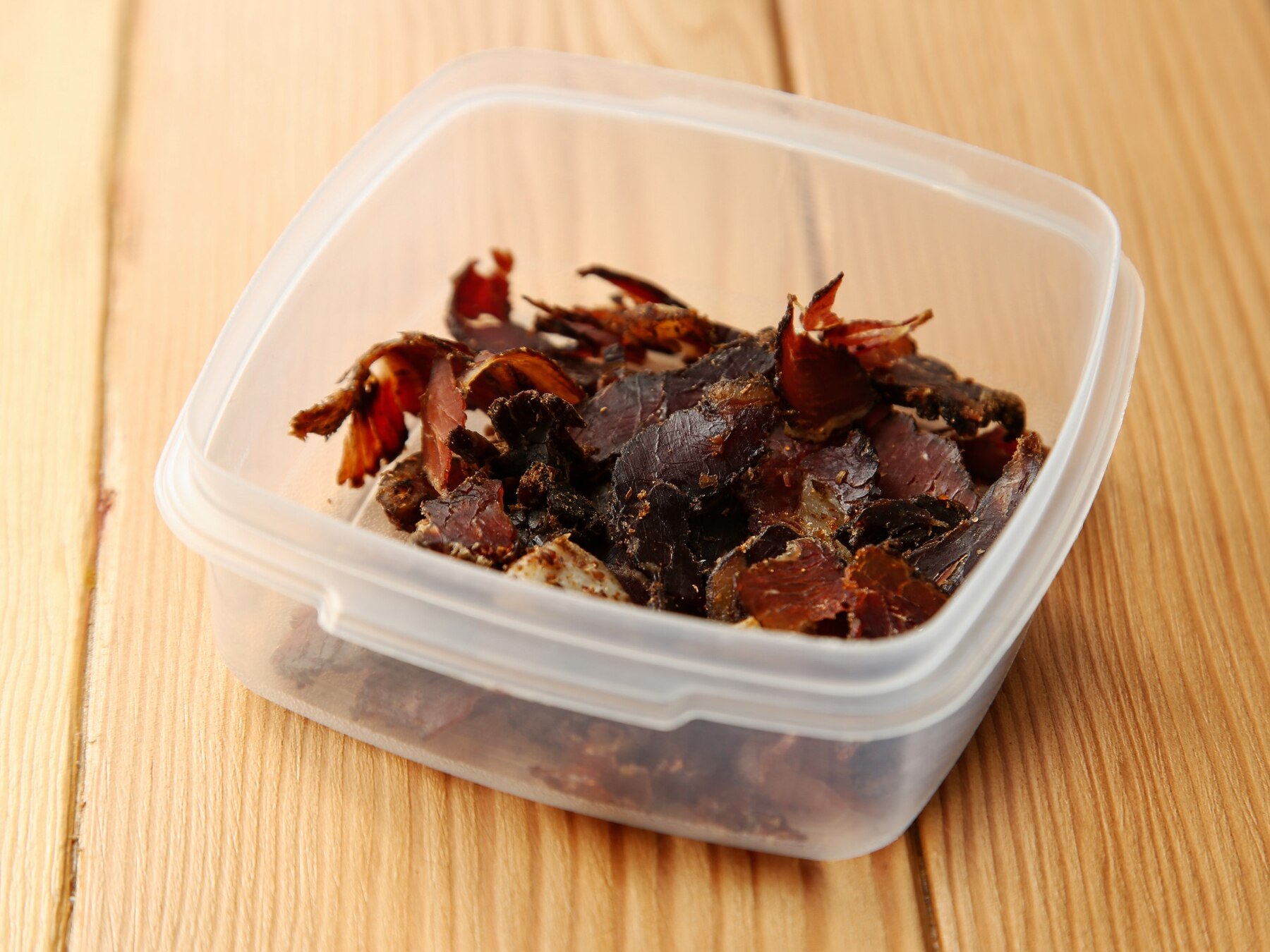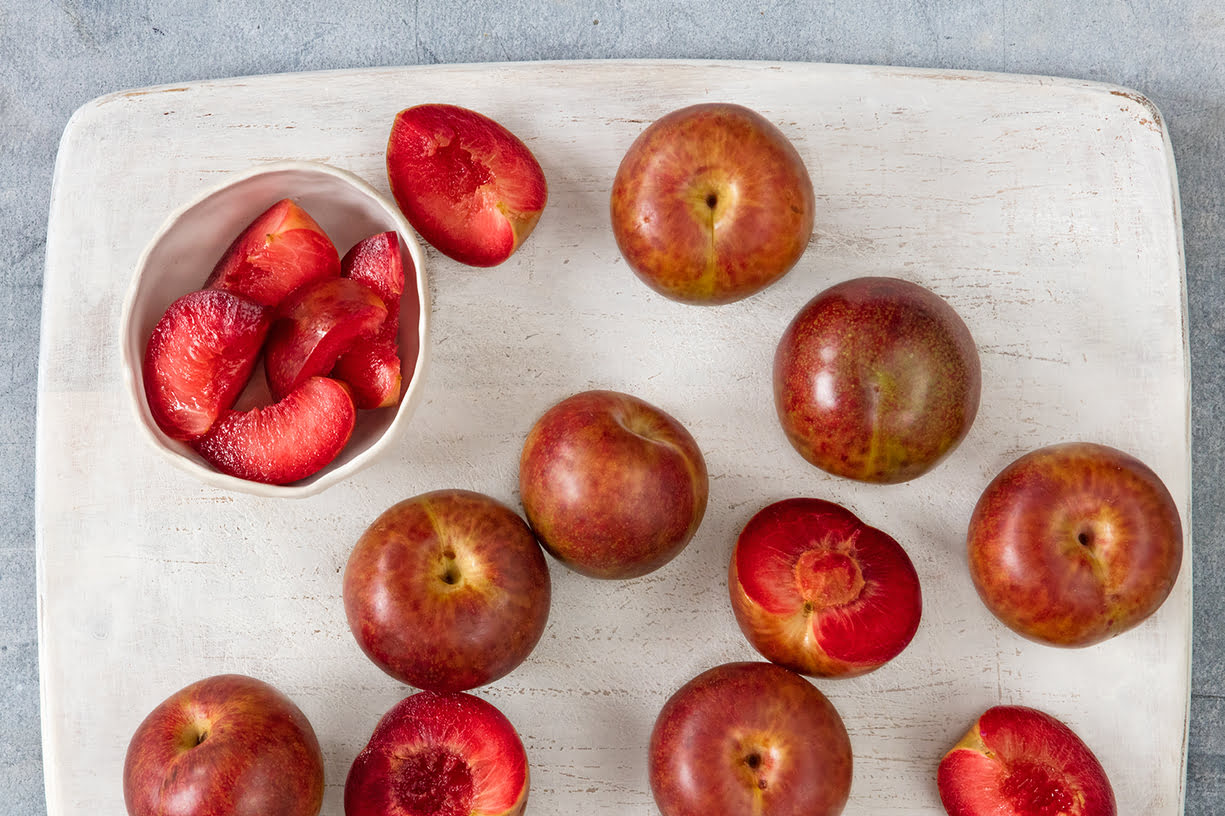

Articles
How To Store Soursop
Modified: August 20, 2024
Learn the best methods for storing soursop in this informative articles. Preserve the freshness and flavor of your soursop with these helpful tips.
(Many of the links in this article redirect to a specific reviewed product. Your purchase of these products through affiliate links helps to generate commission for Storables.com, at no extra cost. Learn more)
Introduction
Soursop, also known as graviola, is a tropical fruit that is highly sought after for its unique flavor and potential health benefits. It is rich in vitamin C, fiber, and antioxidants, making it a popular choice among health-conscious individuals. However, soursop has a relatively short shelf life once it is ripe, so it is important to know how to store it properly to ensure its freshness and prolong its lifespan.
In this article, we will guide you on how to store soursop in different ways to suit your preferences and needs. Whether you have a whole soursop or have already cut it into pieces, we have got you covered. We will also explore options like freezing, canning, and dehydrating soursop for long-term storage. So, let’s dive in and learn the best practices for storing soursop!
Key Takeaways:
- Store soursop in the refrigerator to maintain its freshness for 3 to 5 days, or freeze it for long-term storage of up to 3 months. Enjoy the tropical fruit’s unique flavor and health benefits year-round!
- Whether you prefer refrigeration, freezing, canning, or dehydrating, there are multiple ways to store soursop and extend its shelf life. Choose the method that best suits your needs and enjoy soursop all year long!
Read more: How To Plant Guanabana Soursop Seeds
Choosing Ripe Soursop
Before storing soursop, it is important to ensure that you are starting with ripe fruit. Choosing ripe soursop is crucial to ensure it has the right texture and flavor. Here are some tips on how to choose ripe soursop:
- Appearance: Opt for soursop with a bright green color and avoid ones with dark spots or blemishes. The skin should be firm but slightly yielding to the touch.
- Fragrance: A ripe soursop will have a strong, sweet aroma. If you detect a sour or fermented smell, it may be an indication that the fruit is overripe or spoiled.
- Texture: Gently squeeze the fruit to check if it gives slightly under pressure. Avoid soursop that feels excessively soft or mushy, as it may be overripe.
- Weight: Ripe soursop will feel heavy for its size. The weight is an indicator of its juiciness and ripeness.
Keep in mind that soursop does continue to ripen after it has been harvested. If you are unable to find fully ripe soursop at the store, you can purchase slightly underripe fruit and allow it to ripen at home. Place the soursop in a paper bag at room temperature for a few days until it becomes soft and fragrant.
Once you have chosen ripe soursop, it is time to proceed with the storage methods based on whether you have a whole fruit or have already cut it.
Storing Whole Soursop
If you have a whole soursop, there are a few methods you can use to store it and extend its shelf life:
Refrigerator Storage
The refrigerator is the most common and effective way to store whole soursop. Follow these steps:
- Wrap the whole soursop in a paper towel or place it in a perforated plastic bag. This helps absorb excess moisture and prevents the fruit from becoming too damp.
- Place the wrapped soursop in the crisper drawer of your refrigerator. The controlled temperature and humidity in the crisper drawer will help keep the soursop fresh for up to 3 to 5 days.
- Make sure the soursop is not in direct contact with other fruits or vegetables, as it can release ethylene gas, which may cause premature ripening and spoilage in other produce.
Remember to check the soursop periodically for any signs of spoilage. If you notice any mold, foul odor, or excessive softening, it is best to discard the fruit.
Room Temperature Storage
If you plan to consume the soursop within a day or two, you can store it at room temperature:
- Keep the whole soursop in a cool, dry place away from direct sunlight.
- Place it in a fruit bowl or on a countertop, ensuring good air circulation around the fruit.
- Check the soursop daily to make sure it is not showing signs of spoilage, and consume it before it becomes too soft or develops mold.
Note that storing soursop at room temperature will result in a faster ripening process, so it is essential to consume it promptly to enjoy its optimal taste and texture.
Now that we have covered storing whole soursop, let’s move on to storing cut soursop!
Read more: How To Grow Soursop From Seeds
Storing Cut Soursop
If you have already cut the soursop into pieces and have leftovers, here are some methods you can use to store them:
Refrigerator Storage
The refrigerator is also the best option for storing cut soursop. Follow these steps:
- Place the cut soursop pieces in an airtight container or wrap them tightly with plastic wrap. This helps prevent exposure to air and slows down the oxidation process.
- Label the container with the date to keep track of its freshness.
- Store the container in the refrigerator, preferably in the crisper drawer or in the coldest part of the fridge.
- Use the cut soursop within 2 to 3 days for the best flavor and quality.
Remember to check the cut soursop periodically for any signs of spoilage. If you notice any mold, off-putting smell, or significant texture changes, it is best to discard it.
Freezing Cut Soursop
If you need to store cut soursop for a longer period, freezing is a great option:
- Cut the soursop into desired size pieces and remove the seeds.
- Spread the cut soursop pieces in a single layer on a baking sheet or tray.
- Place the tray in the freezer and allow the pieces to freeze individually for about 2 hours.
- Once the pieces are frozen, transfer them to a freezer-safe bag or container.
- Label the bag or container with the date and freeze for up to 3 months.
When you are ready to use the frozen soursop, simply thaw it in the refrigerator overnight or use it directly in smoothies or other recipes without thawing.
Now that you know how to store cut soursop, let’s explore other storage options like canning and dehydrating!
Freezing Soursop
Freezing soursop is an excellent way to preserve it for an extended period. Here’s how you can freeze soursop:
- Start by selecting ripe soursop. It is important to use fully ripe fruit for the best flavor and texture.
- Wash the soursop thoroughly under running water to remove any dirt or debris.
- Peel the soursop and remove the seeds. You can cut the fruit into chunks or leave it whole, depending on your preference.
- Place the soursop pieces or chunks on a flat tray lined with parchment paper. Make sure they are spread out in a single layer and not touching each other.
- Put the tray in the freezer and let the soursop pieces freeze for about 2 to 3 hours, or until they are firm.
- Once the soursop is frozen, transfer the pieces to an airtight freezer-safe bag or container. Be sure to label the bag or container with the date.
- Return the bag or container to the freezer and store the soursop for up to 6 months.
When you are ready to use the frozen soursop, simply take out the desired amount from the freezer and thaw it in the refrigerator overnight. Thawed soursop can be enjoyed as a snack, added to smoothies, used in desserts, or incorporated into various recipes.
Freezing soursop not only preserves its flavor and nutritional value but also provides convenience for enjoying this delicious fruit all year round, even when it is out of season.
Now that you know how to freeze soursop, let’s explore other storage options like canning and dehydrating!
Read more: How To Store Store-Bought Bread
Canning Soursop
Canning soursop is a great way to preserve its flavor and enjoy it throughout the year. The canning process involves sealing soursop in jars with a sugar syrup to maintain its taste and texture. Here’s how you can can soursop:
- Prepare the soursop by peeling it and removing the seeds. Cut the fruit into desired-sized chunks or slices.
- In a large pot, prepare a syrup by combining water and sugar. The general ratio is 2 cups of sugar for every 4 cups of water, but you can adjust the sweetness according to your preference.
- Bring the syrup to a boil and let it simmer for a few minutes until the sugar has dissolved completely.
- Add the soursop chunks to the syrup and let them cook for about 5 minutes. This will help soften the fruit slightly and infuse it with the syrup’s flavors.
- Using a slotted spoon, transfer the soursop pieces to sterilized canning jars. Make sure to leave about 1/2 inch of headspace at the top of each jar.
- Pour the hot syrup over the soursop in the jars, leaving the same 1/2 inch of headspace. Ensure the soursop is fully covered with syrup.
- Wipe the rims of the jars with a clean cloth, place the lids on top, and screw on the bands until they are secure but not overly tight.
- Process the jars in a boiling water bath for the recommended time according to your altitude and jar size. This typically ranges from 10 to 25 minutes.
- Remove the jars from the water bath and let them cool on a towel or wire rack. As the jars cool, you may hear the lids make a popping sound, which indicates a successful seal.
- Once the jars have cooled completely, check the seals by pressing down on the center of each lid. If it stays down and does not pop back up, the seal is secure. Any jars without a proper seal should be refrigerated and consumed within a few days.
- Label the sealed jars with the date and store them in a cool, dark place. Canned soursop can be stored for up to 1 year.
When you are ready to enjoy the canned soursop, simply open a jar and serve the fruit as is or use it in various recipes such as desserts, drinks, or even savory dishes.
Canning soursop allows you to savor its delicious taste all year round while preserving its natural flavors and nutrients. It’s an excellent option for those who want to enjoy soursop when it’s not readily available.
Now, let’s explore another method of preserving soursop – dehydrating!
Store soursop in the refrigerator, either whole or in a sealed container, for up to 3-4 days. You can also freeze soursop pulp for longer storage.
Dehydrating Soursop
Dehydrating soursop is a fantastic method to preserve the fruit while concentrating its flavors. Dehydrated soursop can be enjoyed as a healthy and flavorful snack or used in various culinary creations. Here’s how you can dehydrate soursop:
- Start by selecting ripe soursop. The ripe fruit will provide the best flavor and texture for dehydrating.
- Wash the soursop thoroughly to remove any dirt or debris.
- Peel the soursop and remove the seeds. Slice the fruit into thin pieces, ensuring they are of uniform thickness.
- Pre-treat the soursop slices by blanching them briefly in boiling water for 1-2 minutes. This helps preserve the color and texture of the fruit.
- After blanching, immediately transfer the soursop slices to an ice bath to stop the cooking process and preserve their crispness.
- Pat the soursop slices gently with a towel to remove excess moisture.
- Arrange the slices in a single layer on a dehydrator tray or on a baking sheet lined with parchment paper.
- Place the tray in a dehydrator or an oven set on the lowest temperature. If using an oven, keep the door slightly ajar to allow moisture to escape.
- Dehydrate the soursop slices at around 125°F (52°C) for 8 to 12 hours, or until they are completely dried and leathery to the touch. The drying time may vary depending on the thickness of the slices and the humidity level.
- Once the soursop slices are fully dehydrated, remove them from the dehydrator or oven and let them cool completely.
- Store the dehydrated soursop in an airtight container or a resealable bag. Ensure that the container is completely dry to prevent moisture absorption.
- Label the container with the date and store it in a cool, dry place away from direct sunlight.
Dehydrated soursop slices can be enjoyed as a nutritious snack on their own or rehydrated by soaking them in water or other liquids to use in recipes such as teas, jams, or baked goods.
Dehydrating soursop allows you to enjoy the fruit’s unique flavors and nutritional benefits year-round. The lightweight and shelf-stable nature of dehydrated soursop make it a convenient option for snacking or incorporating into various dishes.
With these methods of storing soursop, you can now choose the most suitable technique to preserve this tropical fruit and enjoy its distinct taste and health benefits for an extended period.
Remember to always monitor the freshness of stored soursop and discard any spoiled fruit. Enjoy your soursop in various ways and savor the deliciousness it brings!
Conclusion
Soursop is a delightful tropical fruit known for its unique flavor and potential health benefits. If you want to enjoy soursop beyond its limited shelf life, it’s essential to know how to store it properly. From whole soursop to cut pieces, freezing to canning, and dehydrating to refrigeration, there are several methods to preserve and store soursop based on your preferences and needs.
When storing whole soursop, refrigeration is the most effective method. Wrapping the fruit in a paper towel or placing it in a perforated bag and storing it in the crisper drawer will help maintain its freshness for several days. Alternatively, you can store whole soursop at room temperature if you plan to consume it within a day or two.
For cut soursop, refrigeration in an airtight container is recommended to prevent spoilage. Alternatively, freezing cut soursop allows for long-term storage. Simply spread the pieces on a tray, freeze them individually, and transfer them to a freezer-safe bag or container.
Canning soursop in a sugar syrup is a great option for long-term preservation and can be enjoyed throughout the year. Additionally, dehydrating soursop turns it into a tasty and convenient snack that can be stored in an airtight container.
By using these storage methods, you can extend the shelf life of soursop and ensure that you can enjoy its delicious taste, nutritional benefits, and versatility even when it is out of season.
Remember to choose ripe soursop for storage, and check for any signs of spoilage before consuming. Whether you prefer the convenience of freezing, the sweetness of canning, or the crunchiness of dehydration, there is a method for storing soursop that suits your needs.
Now that you are equipped with these storage techniques, go ahead and store your soursop to enjoy its delightful flavors and reap the benefits of this amazing tropical fruit all year round!
Now that you've got the scoop on storing soursop, why stop there? If pests bug you as much as they bug everyone else, our next guide will surely catch your interest. Learn how to keep those pesky cockroaches at bay without harsh chemicals. Our simple, effective advice uses natural remedies, ensuring your home stays both clean and safe. So, if you're ready to tackle another household challenge, don't miss out on our practical solutions for a pest-free environment.
Frequently Asked Questions about How To Store Soursop
Was this page helpful?
At Storables.com, we guarantee accurate and reliable information. Our content, validated by Expert Board Contributors, is crafted following stringent Editorial Policies. We're committed to providing you with well-researched, expert-backed insights for all your informational needs.














0 thoughts on “How To Store Soursop”